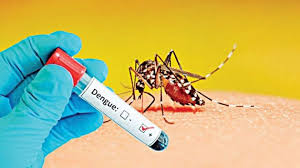Climate change increasing dengue fever threat in Asia, which could become a pandemic
So far, the efforts by governments and international organisations to contain the danger have failed. Dengue fever has no cure and the only prevention is via elimination of the Aedes mosquito. The most dramatic situation is in Rohingya refugee camps in Bangladesh.
Bangkok (AsiaNews) – Despite the efforts of governments and national and international organisations to combat its spread, dengue remains a threat, although despite a rise in the number of cases, mortality is down.
The current summer monsoon has worsened the situation because of heavier rainfall with more standing water, often poor drainage, especially in cities, with already precarious sanitation, and difficulty in accessing timely medical assistance in the event of an infection transmitted by the Aedes mosquito.
The increase in rainfall due to climate change-induced longer rainy periods means that a disease previously linked only to the rainy season is becoming a risk all year round and for several experts, it is close to becoming a global pandemic.
Dengue fever has no cure and prevention is almost exclusively possible by fighting the insect that carries it, which is hard to eradicate.
The increase in cases has been significant since 2020. In India alone, 32,000 infections were reported in the first half of this year, double those of the same period last year.
Overall, it is likely that a new record will be set in the current monsoon season after last year's 290,000 cases, which in turn were higher than the 190,000 in 2022.
Nepal, Bangladesh, and Sri Lanka are affected by the same trend, and are liable to stronger and longer monsoons; urbanisation does not help since it is harder to take the necessary precautions in environments that are more susceptible to atmospheric phenomena that favour widespread contagion.
This is worse where remediation initiatives are inadequate against the spread of mosquitoes, like fumigations that kill the larvae without causing soil and water contamination.
Southeast Asia is another area particularly sensitive to the spread of infection by female mosquitoes of the Aedes genus. Endemic in this region, it seems to be slightly less severe this year, but it could see significant progression in the coming years.
Vietnam has the highest number of cases reported so far in the region by the World Health Organisation (while data by other countries indicate higher numbers), just under 19,000 with three deaths.
Laos is the most affected country, due to its underdevelopment and a territory that is still covered by vast forests and an abundance of water.
However, the worse situation is for 950,000 Rohingya who fled Myanmar, forced to live in 33 densely packed camps in Bangladesh, with poor sanitation and housing.
A demographic giant in the region, Indonesia currently has the highest number of cases in Asia, 91,201, with 640 deaths, three times higher over the first six months of 2023.
The WHO admits that in many monsoon-prone places, data on dengue-related contagion are often approximate and actual deaths are underestimated.
09/02/2005
20/01/2023 15:09







.png)











